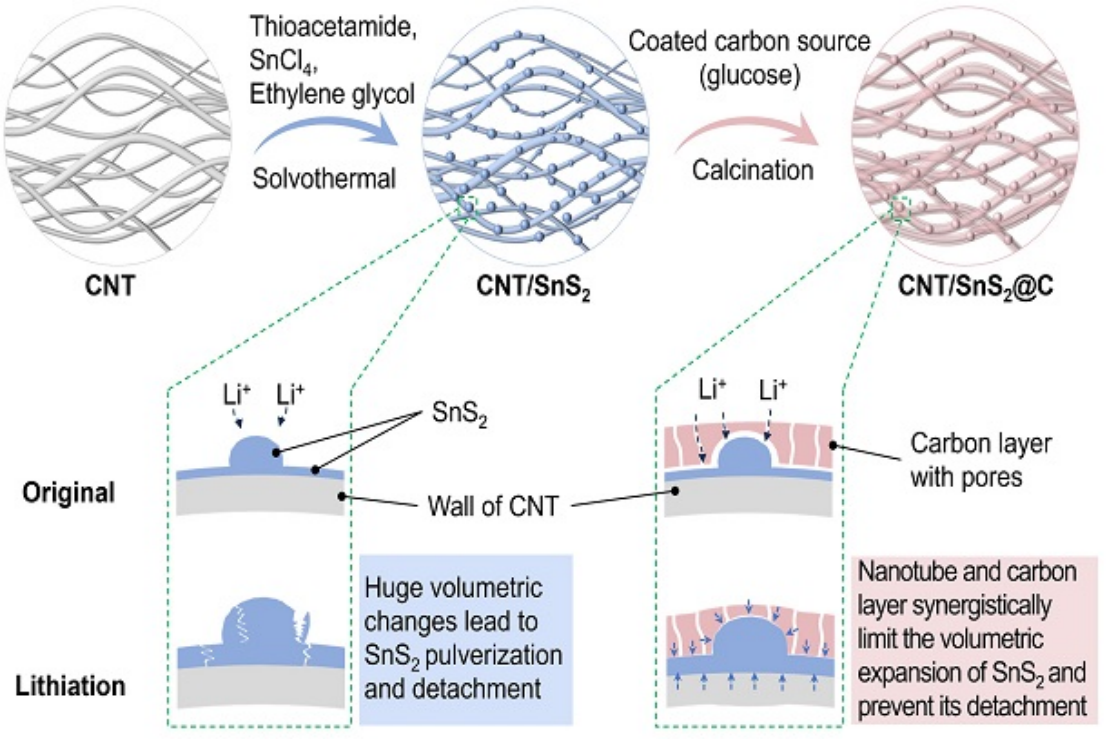
On July 24, the National Institute of Clean-and-low-carbon Energy (NICE) under CHN Energy made a significant breakthrough in the field of computationally driven materials genome engineering. A research paper focused on lithium-ion battery materials design, titled "Synergistic effect of carbon nanotube and encapsulated carbon layer enabling high-performance SnS2-based anode for lithium storage", was published in the top-tier SCI journal Journal of Energy Chemistry (Impact Factor: 14) within the energy chemistry category.

Tin disulfide (SnS2) is considered one of the most promising anode materials for lithium-ion batteries due to its large interlayer spacing and high theoretical capacity. However, its poor conductivity and significant volume changes during lithiation/delithiation lead to rapid capacity degradation, posing a major obstacle to its commercial application. To address this critical issue, the battery materials team in the NICE advanced materials research center employed a computationally driven materials genome engineering approach to develop a novel composite material with excellent lithium storage performance and long cycle stability. This composite material exhibits superior electronic/ionic conductivity, stability, and high lithium storage reaction kinetics, demonstrating outstanding battery performance in experiments. Lithium-ion batteries using this material as anodes can retain lithium storage capacities of 837 mAh/g and 529.8 mAh/g after 100 and 1000 cycles at current densities of 0.1 A/g and 1.0 A/g, respectively.
Several research outcomes from the battery materials team have already been published in internationally renowned journals such as Advanced Functional Materials and Energy Storage Materials. In the future, CHN Energy plans to further enhance the development of new materials driven by artificial intelligence.